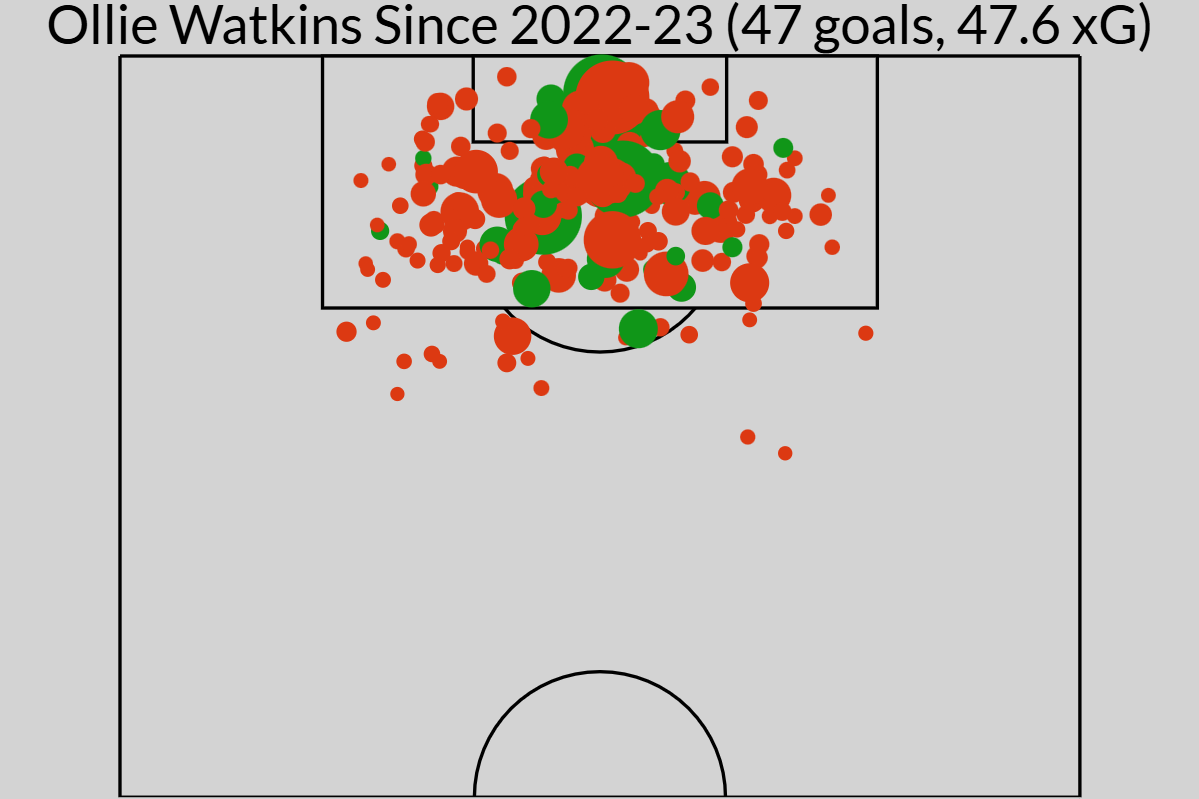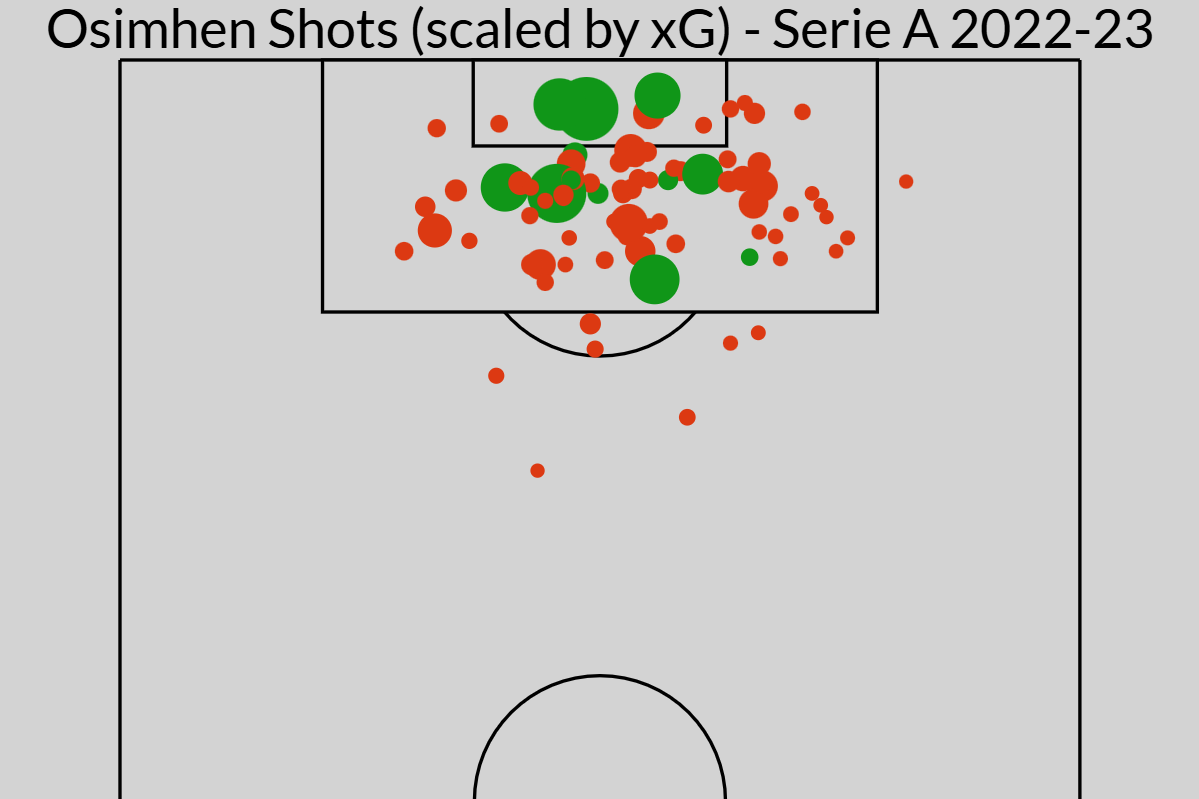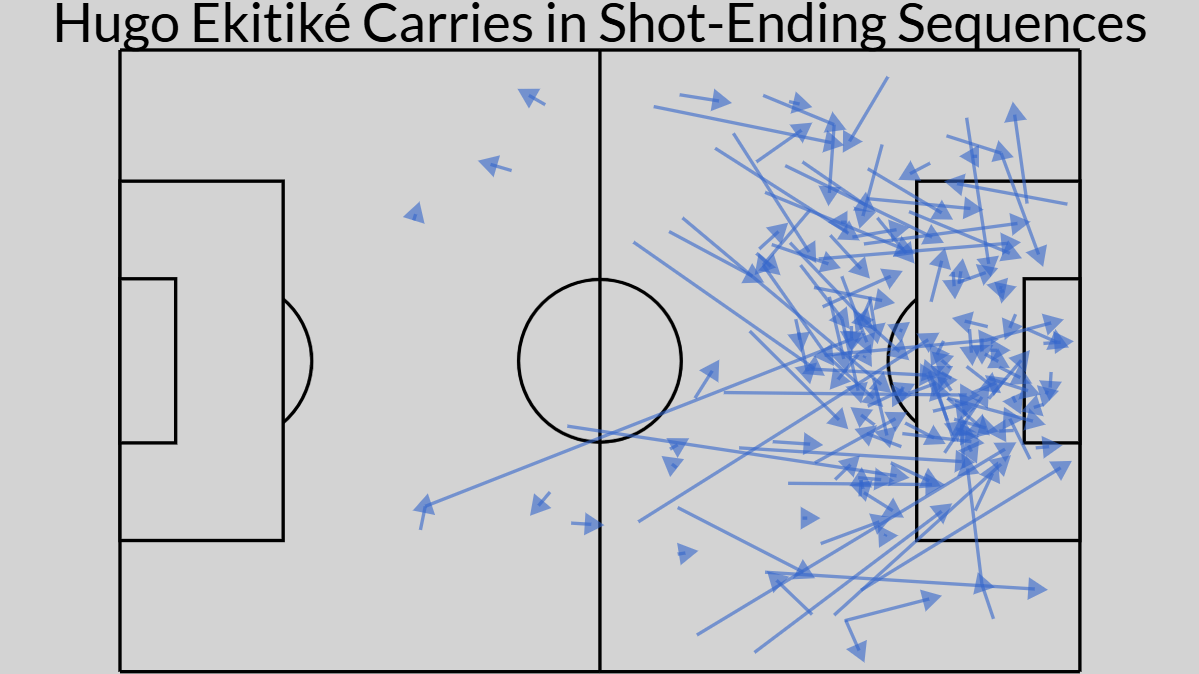As a club, Arsenal are in an interesting place at the moment. They're clearly quite good, on pace for their third consecutive second-place finish in the Premier League. The last time they accomplished such a feat was 2003-05, which included their famous Invincibles title winning season in 2004.
Whether it be goal difference, expected goals or adjusted goal difference (a metric that accounts for both goals and expected goals), Arsenal come out looking like the second-best team in the Premier League. Considering the significant number of injuries they've dealt with and that they lead the league in red cards, it's a credit to them that they've managed to maintain a high floor.
And yet, you could forgive Arsenal fans for feeling this season was a missed opportunity.
During this dominant era of Manchester City football under Pep Guardiola, the rest of the Premier League have been hoping for a "season from hell" from them while also hoping to be in position to take advantage. While this did already happen to some extent in 2019-20 when Liverpool claimed their first league title since 1990, the 2024-25 season has truly been that golden opportunity. Instead of Arsenal being the club to climb to the top after running Man City close in 2023 and 2024, it's once again been Liverpool, with the Reds cruising towards the title under new manager Arne Slot.
This summer could be an era-defining transfer window for Arsenal as they continue to hunt for a first league title since 2004. With the expansion of the Club World Cup along with extra matches in the Champions League, clubs at their level will need deeper squads and must be more willing to rotate throughout the season. Having more depth has never been more important.
With all that in mind, it would be an interesting exercise to look at potential options at striker, a key area Arsenal would have to fortify. For the many good things that can be said about Kai Havertz, asking him to be the lead striker every week is asking a ton, especially given the severe hamstring injury he'll be recovering from going into the 2025-26 season.
There are a number of options Arsenal could go with, depending on how they envision their current project unfolding. (It's worth noting they've been looking at RB Leipzig's Benjamin Sesko since last summer, with hopes fading at the end of the transfer window.) Beyond him, we'll look at three different options based on prioritizing the short-term, finding balance between short and long-term, or taking the long view approach.
Short-Term Option: Ollie Watkins
There's a saying in North American sports: "flags fly forever." In other words: once you win a title, it's all worth it, and this includes any potential pain in the future for near-term decisions made in the lead up to the achievement.
In the case of Arsenal, going short-term at striker is believing that you can win the title in the next 1-2 yrs before the aging curve process might take hold. Yes, the contract signed for a short-term striker option might not age well, but winning it all means you don't have to say sorry.
Through that lens, Ollie Watkins is certainly a good candidate for the "win now" option. Arsenal already tried to acquire him in the most recent January window, and it's not hard to see why. From 2022-23 to this season, he ranks sixth among outfield players in the "Big 5" European leagues for total goals and assists, according to Stathead. He's an England international who's been the lead striker for Aston Villa as they've ascended to being a top-half PL side that's still in the Champions League.
Watkins' greatest attribute is arguably his movement without the ball. Not only does he combine precision with the timing of his runs, but he's got the intensity and motor to not be complacent if his initial drive fails. It's common to see him quickly flipping his hips while attempting multiple moves to keep the opposition on their toes.
Beyond that, he's diligent in trying to maneuver to the blindside of his defender before making sharp cuts in behind. This also shows itself within the box, as he'll often make weaving runs back and forth towards the near post. Those near-post movements can also help create space for teammates, amplifying the team's attack.
Watkins' off-ball repertoire is one of the most well-rounded among his contemporaries. Add that up, and you get a healthy shot diet with both volume and locations. Watkins' shot volume on a per-90 basis in 23-24 and 24-25 have been 2.99 (72nd percentile among Premier League strikers) and 3.07 (79th percentile) respectively, which is really good volume considering Aston Villa have been middle of the pack as a team for shots per game under Unai Emery.
 (Green denotes goal; red denotes no goal)
(Green denotes goal; red denotes no goal)
Where the questions begin regarding Watkins' appeal for Arsenal is what he can do on the ball. As a passer, he has a low usage. According to FBref, he's in the 24th percentile this season for live-ball passes among forwards in the Premier League. He'll occasionally come deeper into pockets of space and from there, he has the touch when receiving ground passes along with the wherewithal to bring teammates into play through quick lay-offs and flicks.
Even calling him a tertiary playmaker in the final third would be an overstatement. Being an active channel runner with a high workrate means Watkins will get his fair share of progressive carries, although he doesn't have much shiftiness as a dribbler in wide areas.
Watkins has been a very good player in the Premier League for some time, and his heavy off-ball skillset is the kind that should scale up to elite clubs. Whether that'd be worth the likely heavy price it'd take to acquire him is fair to wonder given the years left on his current contract (his Villa deal reportedly expires in 2028), and the dynamics of an intra-league transfer between top clubs in the top half.
Any deal for him would take him into his 30s, which is a pricey gamble that could significantly impact Arsenal's finances going forward if it doesn't work out. The relatively middling on-ball capacity with his game makes him less dynamic compared to the others choices below, perhaps giving him a lower level of undeniability as a talent.
Medium-Term Option: Victor Osimhen
One could argue that this is the Goldilocks option among the three. Arsenal have a weighted average squad age of 26.5 years this season according to FBref, putting them in the middle of the pack in the league. While it's true that Arsenal are ready to win now, they're still young enough that they could continue to contend for the next handful of years, rather than focusing on the short-term.
Acquiring a striker who's 24-26 would align with the timeline of several players on the squad, including Martin Ødegaard, Gabriel Magalhães, and Declan Rice. It might even be possible, due to how many minutes he's already played for a 23-year-old, that Bukayo Saka's peak will happen earlier than some might think. (Raheem Sterling is an example of this phenomenon.)
Victor Osimhen would be the choice due to his skill-set and pedigree, as well as being relatively affordable for Arsenal with a release clause this summer in the region of €70m. While Alexander Isak might be the better player right now, it's quite possible Arsenal will be priced out of acquiring the Swedish international this summer.
As it stands, Osimhen is in one of the weirder situations in some time. At 26, he's in the prime of his career and less than two years ago, he was a major force in leading Napoli to their first Scudetto since 1990 as Serie A's top goalscorer. But a failed move to Chelsea over the summer, along with clubs tightening up their spending, has led to Osimhen currently playing the 2024-25 season for Galatasaray. There, he's continued to score tons of goals in Turkish football (20 goals in 22 league appearances as of the March international break), and was utterly dominant in this season's Europa League run (6 goals in 7 appearances). In just under 600 minutes, Osimhen generated over 7 shots per 90 according to FBref, a figure you rarely see and would be forgiven for initially thinking it was a typo.
Like with Watkins, the sales pitch for Osimhen is based on him being a low-touch, high-impact striker. Whereas Watkins perhaps has a bit more savvy in how he operates without the ball, Osimhen has a decisive edge in athleticism. His speed and pace off the mark can be frightening, which is used to chase 50-50 balls or make short dashes into the box once a teammate receives the ball between the lines. Being a massive aerial threat is also valuable for both puncturing low-blocks by opponents and during set pieces, which Arsenal have famously been great at in recent years.
On the ball, Osimhen is a bit more dynamic than Watkins. Because of the former's size and aerial advantage, his hold up play is more varied. It can look a bit robotic at times with some heavy touches, but there are good moments as well. In terms of dribbling, he's got moves, including in tight areas. While his progressive carries can be a bit loose in execution, he eats up a ton of space with a few strides and can absorb contact in these situations.
Part of Osimhen's appeal for Arsenal would be his ability to get shots off from a variety of situations. It can be from leaping above defenders in the box for headers, or quick powerful shots from the wide zone in the penalty area following a run into the channels. His preference for striking with power means that while he can reliably hit the top corner from tougher angles others couldn't, he doesn't have much variety with his shooting technique, which can be relied on in other situations such as 1-on-1s. Despite this, he finished above his non-penalty expected goal mark from 2020-24 with Napoli, primarily driven by his 2022-23 season. His shot map from the 23-24 season showed that even in a down campaign, he can generate a ton of quality opportunities from the middle zone of the penalty box.
 (Green denotes goal; red denotes no goal)
(Green denotes goal; red denotes no goal)
There are fair critiques to be levied at Osimhen and his suitability for Arsenal. For one, he's not been the picture of health throughout his career. Dating back to 2018-19 when he was in the Belgian pro league, he's only played 2,000 minutes or more in a league season during three of the past seven seasons. It's perhaps not a coincidence that he's scored 20 or more league goals in a season just once in his career (30 in 2022-23). While the injuries have tended to be non-muscular, the freedom and energy he plays with means he is prone to spells on the sideline.
There's also the possibility he regresses to the mean in the Premier League compared to what he's shown elsewhere, particularly in Serie A. The Premier League is unforgiving and there is quality up and down the table, which leads one to wonder whether he'll continue to be dominant in the penalty area as he has been in Italy and Turkey.
Long-Term Option: Hugo Ekitike
In Ethan Nwaneri, Myles Lewis-Skelly and Saka (if you think he'll age gracefully into his 30s), Arsenal have multiple high-end 23-and-under talents that the club could build around for the rest of the decade and beyond. Given that and the club's strong financial position, it stands to reason that they can think more long-term with squad building. Acquiring a top-end striker in their early 20s is a bet on this young core being the base of a long-term title contender.
The name on many Arsenal fans' lips at the moment is Hugo Ekitike of Eintracht Frankfurt. After a disappointing stint with Paris Saint-Germain, moving to German football has revitalized his career and the 2024-25 season has been his best one yet as a pro. All of his statistical indicators (shots, expected goals, chance creation) are the best they've been this season.
Among qualified players in the Bundesliga, Ekitike's just outside the top 10 for non-penalty goals and assists per 90, and second in non-penalty expected goals and assists per 90. Going back to the 2017-18 season, Ekitike is just inside the top 10 for single season npxG+xAG/90 in the Bundesliga with at least 810 minutes played, which is very impressive given the majority are former or current Bayern Munich and Borussia Dortmund players.
Ekitike's appeal for Arsenal is that he flashes the skill-set of a forward who is closer to 5-foot-10 than his listed height of 6-foot-3. His speed is impressive for his height, and he's seemingly improved both in German football compared to when he played for Stade de Reims and PSG in France. He can combine trickery on the ball with a quick first step, and will regularly drift towards the flanks to hunt for 1-on-1 opportunities. It's not always flawless, but he's brought impressive value as a carrier. As of Mar. 31, he ranks fifth in the Bundesliga for carries in shot-ending sequences, and 30th across Europe's big 5 leagues.

The passing component for Ekitike is something of a mixed bag. Like with Watkins and Osimhen, he's comfortable with executing quick flicks to help add pace to slower possession sequences against a deep-set defense, although Osimhen is the best of the three in terms of chested lay-offs and headed passes. His best moments of progressive passing tend to occur during transitions, taking advantage of the plentiful fast attacks generated from Frankfurt's system by making runs into space and surveying his options.
Ekitike is also a willing crosser in these situations, including trivela attempts with the outside of the foot. The assist he had for Frankfurt's first goal vs Ajax in their 4-1 victory in the UEFA Europa League Round of 16, second leg showed his playmaking upside when surrounded by other runners on the squad.
Off the ball, it's tough to tell how good Ekitike is at the moment. Compared to Watkins and Osimhen, he'll appear more often in non-traditional areas like the flank or dropping deeper with another teammate occupying the last line. This was especially true with the dynamic between himself and Omar Marmoush during the first half of the season. He'll try to briefly drop deep before using the momentum of the defender to chase aerial passes over the top, especially versus high lines.
During transition, Ekitike can use his pace to make straight-line runs between the center backs for potential close range shots in and around the six-yard box. Given the high octane nature of the Bundesliga, it's tough to tell how good his penalty box movement is at the moment during slower possession sequences, which is something that'll need to be at a high level when moving to Arsenal since they face deeper defenses every week.
A reason to have some skepticism over Ekitike's production this season (and the small sample in 23-24) is the "Bundesliga Tax," a term given to the decline in production for players moving from the Bundesliga to the Premier League. Previous work on this has shown on average that there is a noticeable drop off. Of course this isn't uniform, as evidenced by the success of Erling Haaland, but there have been recent examples of this at work (Timo Werner and Jadon Sancho, for example). The lack of defensive compactness in the Bundesliga compared to elsewhere helps make it a more attacker friendly environment, which makes it tougher on average for those players to translate in other leagues.
The upside case for Ekitike is he could develop like what has happened with Isak at Newcastle, another example of a tall, skilled striker with a similar physical profile. Through steady refinement of his game, Isak has become one of the best strikers in the world and is at the peak of his powers. If Ekitike hits, Arsenal get to reap the benefits of having a top tier striker for the next 7-10 years. While it's quite possible he ends up contributing the least near-term from these options Arsenal could choose from, the long-term upside is considerable.
